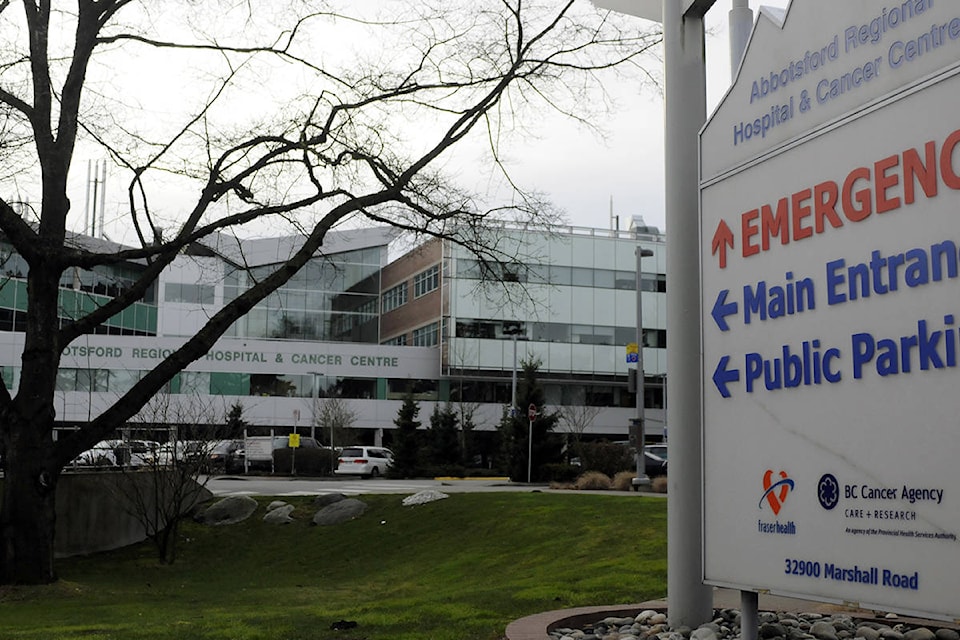One year and $1.1 million later, Abbotsford Regional Hospital has close to a full complement of full-time emergency nurses.
Last March, the hospital’s ER had more than 30 openings for emergency department nurses, forcing Fraser Health to spend hundreds of thousands of dollars to fly in nurses from outside the region. The BC Nurses Union (BCNU) called the situation “deplorable,” and compared the ER to a war-zone MASH unit.
Fast forward 12 months and the staffing situation is better, although overcrowding in the ER remains a problem.
The hospital is now nearing full staffing of 88 ER nurses, Christine Sorensen, the acting president of BCNU, told The News.
That is good news, she said, but the hiring of dozens of new nurses brings with it some challenges. Sorensen said it’s vital that the hospital retains its senior nurses, who will be relied on to mentor and support their younger colleagues.
The new nurses should also bring down the amount Fraser Health is spending on temporary contract nurses.
This fiscal year – which concludes this week – Fraser Health had spent more than $1 million on agency nurses specifically for the ARH ER. That was around 20 per cent higher than the previous year.
A health authority spokesperson confirmed that most of that money was spent last year, when the ARH emergency department had dozens of nurse vacancies.
In seeking to address the shortfall, Fraser Health said it has been recruiting nurses from outside of B.C., boosting mentorship and support, and offering flexible shift scheduling.
The health authority has also decided to make permanent a program that provides funds to allow registered nurses to obtain the specialized nursing training needed to work in an ER.
Fraser Health CEO Michael Marchbank said the health authority aims to completely eliminate the use of temporary nurses.
But he noted that staffing challenges are a “long-term” problem being felt across the health sector.
Sorensen said the staffing issues are part of larger, more systemic challenges faced by B.C. hospitals.
Recently, she said the ARH emergency department had 42 admitted patients who hadn’t had a bed found for them elsewhere in the hospital. Such congestion isn’t great for patients or for staff, she said.
Solving those issues will require more residential care beds and supports for patients who are ready to move on from hospital but may not presently have anywhere to go, Sorensen said.
The union and Fraser Health appear to have settled on the same solution in that respect. In recent years, the health authority’s strategy for addressing congestion has focused on increasing home health and residential care supports.
But while several hundred new residential care beds have come online, they haven’t been enough to fix the problem.
Meanwhile, the redevelopment of the old MSA Hospital site on McCallum – which will involve major residential care improvements – has been stuck in the planning stages for years.
